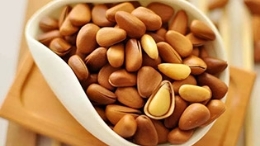🔍How to distinguish the natural diamond , moissanite or zircon, today to tell you about the difference between the three ~
Diamond
💎Diamond is a natural mineral, composed of a single element of carbon (C), formed deep in the Earth under high temperature and pressure conditions, and the market is now dominated by diamond supplier De Beers.
🌟Hardness: the highest, up to 10, good wear resistance, symbol of love indestructible.
🌟 Refractive index: high, 2.417, so diamonds are shinier than most gemstones
🌟Dispersion value: 0.044, so the diamond can reflect the colorful and beautiful colors (fire).
Lab Grown Diamond:
💎 Lab grown diamonds are real diamonds, made of the same ingredients as natural diamonds, which are grown using diamond crystals in a laboratory to mimic the growth conditions of natural diamonds. It and natural diamonds are basically “twin brothers”, the physical and chemical properties are completely consistent, but the price can be much closer to the people, is the perfect choice for the pursuit of cost-effective.
🌟Hardness: 10,same as natural diamonds
🌟Refractive index: 2.417
🌟Dispersion value: 0.044
Moissanite
💎Natural moissanite is rare and only appears in craters, and the moissanite on the market is basically synthetic and has a large output.
🌟Hardness: 9.25, slightly lower than natural diamond, wear resistance is also good.
🌟Refractive index: 2.65, slightly higher than diamond, is birefringent, so magnification to see faceted edge double.
🌟Dispersion value: 0.104 is much higher than diamond, so Mosan reflects more color and is more pronounced.
Zircon (cubic zirconia)
💎Natural zircon, also called “hyacinth,” is a silicate mineral that comes in a variety of colors. What is used as a substitute for diamonds is synthetic zircon, also known as cubic zirconia (CZ), which is different from natural zircon, is artificial mass production, and the price is very cheap.
🌟 Hardness: 8.5, higher.
🌟 Refractive index: 2.17, also birefringence, there is also facet edge double.
🌟 Dispersion value: 0.06.
‼ Distinction
💡 Of these four stones, only natural diamond has value preservation and appreciation properties, lab grown diamonds, moissanite and cubic zirconia (CZ) are artificial mass production, do not have high value and value preservation.
💡 Hardness: Diamond=Lab Grown Diamond> Moissanite > Cubic zirconia, cubic zirconia durability is relatively poor.
💡 Refractive index: Moissanite > Diamond=Lab Grown Diamond > Cubic zirconia, generally speaking, the higher the refractive index, the brighter the luster.
💡 Dispersion value: Moissanite> Diamond>Lab Grown Diamond > Cubic zirconia , Moissanite has the strongest fire color.
‼ A way to identify yourself at home:
💡 Moissanite and zircon will have birefringence, magnifying observation will see faceted edge double shadow.
💡 White paper identification method: Draw a horizontal line on white paper, place the bare diamond face down on the horizontal line, and look down from the back. If you can see the line underneath the diamond, whether it is a straight line or a crooked line, the diamond is a counterfeit.


